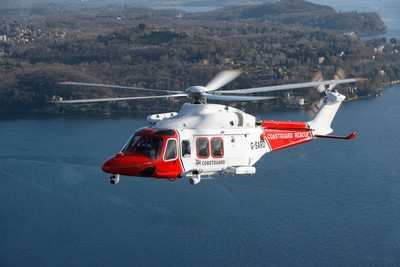Thu, Nov 04, 2021
AD 2021-22-13 Requires Performing An RTC On Certain Part-Numbered Hoist Assemblies
The FAA is adopting a new airworthiness directive (AD) for certain Leonardo S.p.a. Model AB139 and AW139 helicopters.

This AD was prompted by the determination that the requirement to accomplish a rated load check (RTC) on certain hoist assemblies may have been inadvertently left out of some aircraft maintenance publications (AMPs). This AD requires performing an RTC on certain part-numbered hoist assemblies with certain part-numbered hoist cables installed and corrective actions if any discrepancies are found as specified in a European Union Aviation Safety Agency (EASA) AD, which is incorporated by reference. The FAA is issuing this AD to address the unsafe condition on these products. This AD becomes effective November 17, 2021.
Supplementary Information: EASA, which is the Technical Agent for the Member States of the European Union, has issued EASA AD 2021-0186R1, dated August 18, 2021 and corrected August 23, 2021 (EASA AD 2021-0186R1), to correct an unsafe condition for Leonardo S.p.A. Helicopters, formerly Finmeccanica S.p.A, AgustaWestland S.p.A., Agusta S.p.A.; and AgustaWestland Philadelphia Corporation, formerly Agusta Aerospace Corporation, Model AB139 and AW139 helicopters.

EASA advises that a review of an AW139 AMP manual determined that the requirement to accomplish an RTC on a Breeze hoist assembly was not introduced until AMP issue 39, dated June 7, 2021. EASA advises the RTC is intended to verify the integrity of the hoist assembly and the efficiency of the hoist system operation. EASA further advises that the RTC is included in the hoist manufacturer's Flight Line Operation and Maintenance Manual and is required whenever the hoist cable is replaced or a hoist is stored for more than 12 months. EASA further advises since the RTC has been recently published in the AW139 AMP it may not have been accomplished on all affected hoist assemblies. This condition, if not detected and corrected, could lead to failure of the hoist assembly, possibly resulting in loss of external human cargo during hoist operations. Accordingly, EASA AD 2021-0186R1 requires accomplishing an RTC of certain hoist assemblies, and if during the RTC any discrepancy is detected, before next hoist
operation, contacting Leonardo S.p.a. Helicopters for approved corrective action. See the EASA AD for additional background information.
More News
Its Offerings Are Lighter, Cleaner, and Now Pushing Past 1,000nm on SAF Jet Fuel DeltaHawk’s diesel-powered aircraft lineup has seen incredible upgrades over the last few yea>[...]
The Airplane Experienced A Total Loss Of Engine Power On December 3, 2025, about 1600 central standard time, a Mooney Aircraft Corp. M20K, N57229, was substantially damaged when it>[...]
Make Sure You NEVER Miss A New Story From Aero-News Network Do you ever feel like you never see posts from a certain person or page on Facebook or Instagram? Here’s how you c>[...]
Aero Linx: European Society of Aerospace Medicine (ESAM) As a pan-European, independent forum, it works to promote the safety and health of all persons involved in aviation and spa>[...]
“We are excited to see Wisk achieve this milestone, and I’m so proud of the team that made it possible. The team at Wisk has built advanced technologies across flight c>[...]
 Aero-TV: DeltaHawks Diesel Power Steps Into the Spotlight
Aero-TV: DeltaHawks Diesel Power Steps Into the Spotlight NTSB Prelim: Mooney Aircraft Corp. M20K
NTSB Prelim: Mooney Aircraft Corp. M20K ANN FAQ: Turn On Post Notifications
ANN FAQ: Turn On Post Notifications ANN's Daily Aero-Linx (12.20.25)
ANN's Daily Aero-Linx (12.20.25) Aero-News: Quote of the Day (12.20.25)
Aero-News: Quote of the Day (12.20.25)




